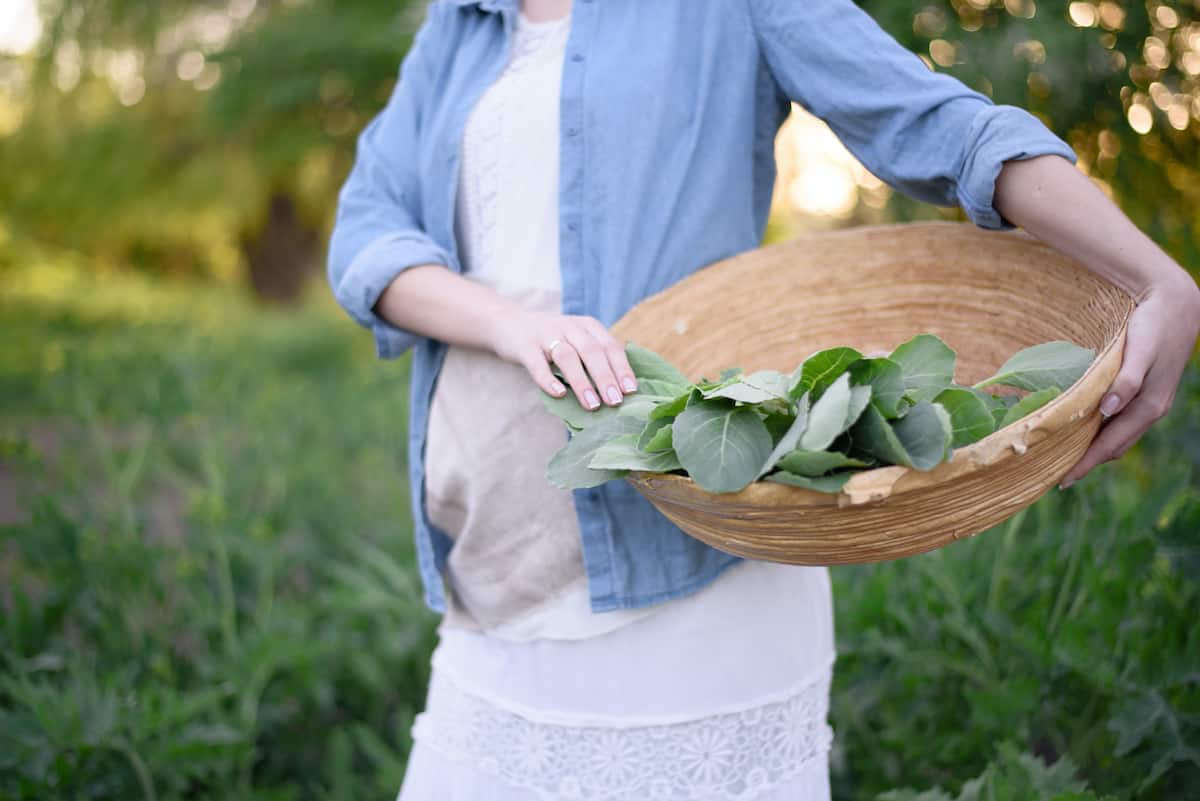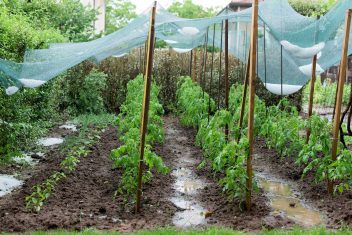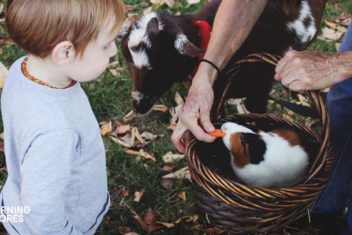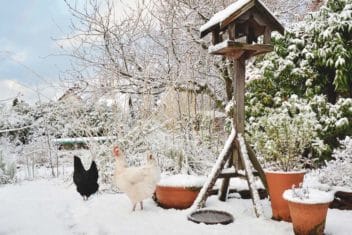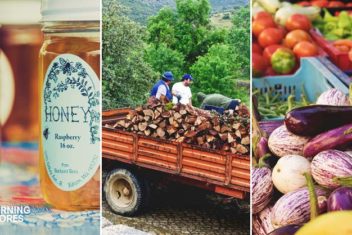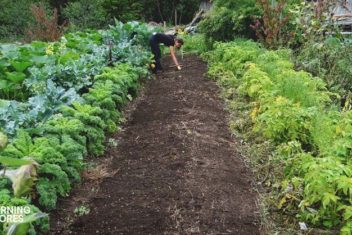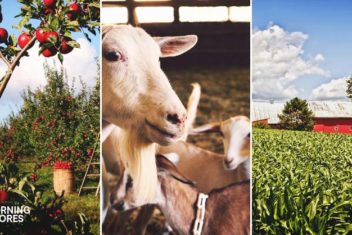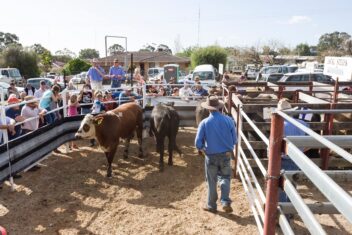The countdown is on – I am currently pregnant with my first baby, due sometime within the next 3 weeks!
One of the questions I agonized over before my husband and I decided to start a family was whether it would be possible for me to continue working full time and continue working on the farm all while balancing pregnancy and motherhood.
I’ve never been known to back down from a challenge, though, and not wanting to give up on all of our farming and homesteading goals (along with my personal professional goals) we decided to give it a go.
Homesteading or farming while pregnant is far from a cakewalk – in fact, the last 9 or so months of my life have been some of the most challenging. They have also been some of the most rewarding – and I’ve learned more about myself, my relationship, and about this lifestyle than I ever thought possible.
If you’ve recently discovered that you are pregnant or are thinking about trying to homestead while pregnant, I encourage you to read these helpful tips – many of them I’ve learned and experienced firsthand myself.
The Challenges of Homesteading While Pregnant
There are so many challenges associated with homesteading while pregnant – many of which I never would have even imagined.
Most of all are the physical challenges. You might not notice these as often when you’re early in your pregnancy (this can lead to some foolhardiness on your part if you’re anything like me!).
However, they are happening. You might have a hard time doing the things that were once second nature, like carrying a bucket of water out to the chickens or plucking tomatoes from the vine in the garden.
There are the obvious physical challenges, like the extra weight you’re carrying around, along with the ones you might not see coming (hello, pregnancy carpal tunnel). Let’s not forget the added fatigue, either.
There are plenty of challenges associated with pregnant homesteading – but of course, many rewards, too.
Tips for Homesteading While Pregnant
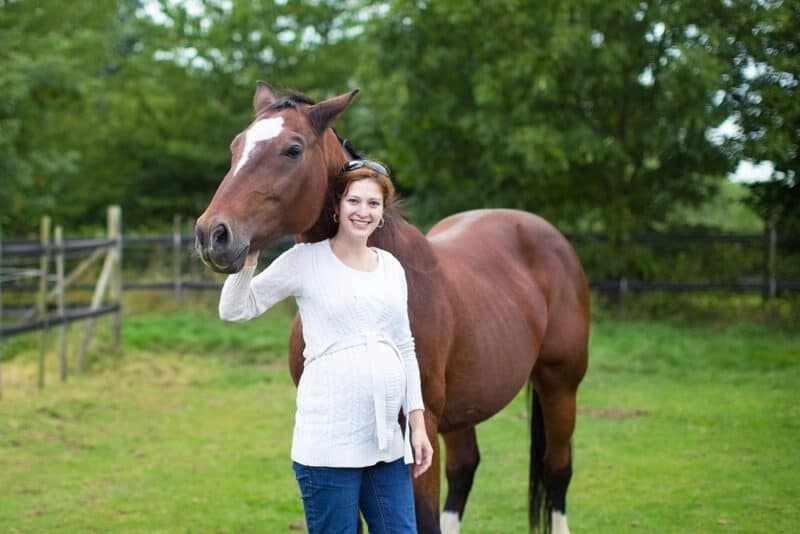
1. Slow Down
Each trimester of pregnancy will pose its own new challenges. Every pregnancy is different, so I can’t say how your pregnancy will affect you. In general, though, you will have to slow down throughout every trimester – that’s physically and in terms of your mental to-do list.
Especially during the last trimester, you’re going to feel the physical challenges of hefting around an extra 20, 30, 40 – whatever it might be! – pounds. I walk into a counter or sink pretty much every day because I’m still not used to how much my belly sticks out.
It might be harder for you to get dishes out of the dishwasher or to reach down to fill a feeding trough. Your duties on the homestead might look a lot different these days – and that’s ok.
Rest if you can. Take naps. There’s a lot of prep work that you need to do to get ready for your baby – and to keep taking care of your homestead – but take a break whenever possible.
2. Ask for Help
Don’t be afraid to ask for help – or to accept help when it is offered to you. A big challenge of being pregnant is that everybody (primarily dads and husbands – at least in my experience) is going to chide you for doing too much.
If you’re like me, though, you might assume that the work won’t get done if you don’t do it yourself – and so you just bully through it anyway.
However, pregnancy is not the time to be stubborn. Ask for help on tasks that are too challenging for your changing body. Even if it was something you could do easily before, that could very well change in a matter of weeks. Case in point – I can no longer reach certain shelves in my house because my belly gets in the way. Long-armed husband to the rescue.
You need to ask for help and, if it’s in your budget, consider paying for outside help. Can you hire a farmhand? If so, that can take some of the burden off of you (and off your partner, if your homestead is a family farm).
3. Plan Ahead
This is definitely not always possible, but if you can, time your pregnancy so that you don’t have to be pregnant during your busiest season of the year! This will be different for everyone, of course.
I found out that I was pregnant in January. Most of my “ickiest” moments of nausea and extreme fatigue fell during our downtime of January, February, and March.
By the time planting, lambing, and farrowing season rolled around, I had a lot more energy. Now, almost finished with my third trimester, the soreness and fatigue have returned. Fortunately, most of the weeding, watering, and animal care chores have more or less wrapped up for the year.
If you are planning on starting a family, try to do so with some thought about your timeline. Of course, this isn’t always possible, and there’s no way of predicting how your body will cope with pregnancy. It might make things a little bit easier, at least.
You’ll also have to plan ahead once you discover that you are pregnant. Start by making a list of what kinds of tasks you can delegate to others or just cross off your list entirely. Normally, I spend a lot of time tending to my herb garden over the summer. This year, I decided to scratch it. I planted a few herbs, but for the most part, haven’t done anything like what I’ve done in the past.
To me, other farm chores took precedence – it was more important that I work on the vegetables, on helping to care for the animals, and on prepping the house for the baby.
You have to prioritize at this time of your life. You just won’t have time or energy to do everything.
4. Avoid Straining Yourself
By far, this has been the most difficult aspect of pregnancy for me. I’ve never been one to back down from a challenge. As a farmer, former marathon runner, and just all-around active person, it is very difficult for me to sit down and take a break.
However, what I have discovered is that pregnancy is unlike any other experience – and it’s not about you.
As a pregnant homesteader, it’s important that you work hard to work less. Even though you might be used to lifting 80lbs grain bags, that doesn’t mean that you still should. Take it from me. My arms tell me it’s still okay to be lifting on things, but my abdomen and back tell me the next day that it is definitely not okay.
Listen to your body on this one. It can be tough to slow down and let others do the heavy lifting and straining. Try to relish the break if you can.
Now, there is one caveat.
Here’s the deal. Some doctors are overly cautious and will tell you no heavy exercise and no lifting anything more than 25lbs.
I was very fortunate to have a doctor who understood my way of life and that those restrictions simply weren’t practical, but also unnecessary.
You can read more medical advice about exercise during pregnancy. What’s important to realize is that you know your body best.
Be smart and of course listen to your doctor. Remember, too, that women have been farming since the beginning of time.
You need to reduce your workload, of course. You also need to avoid straining yourself. However, don’t relegate yourself to lying on the couch for 9 months, either. You’ll drive yourself crazy!
5. Don’t Take On New Tasks
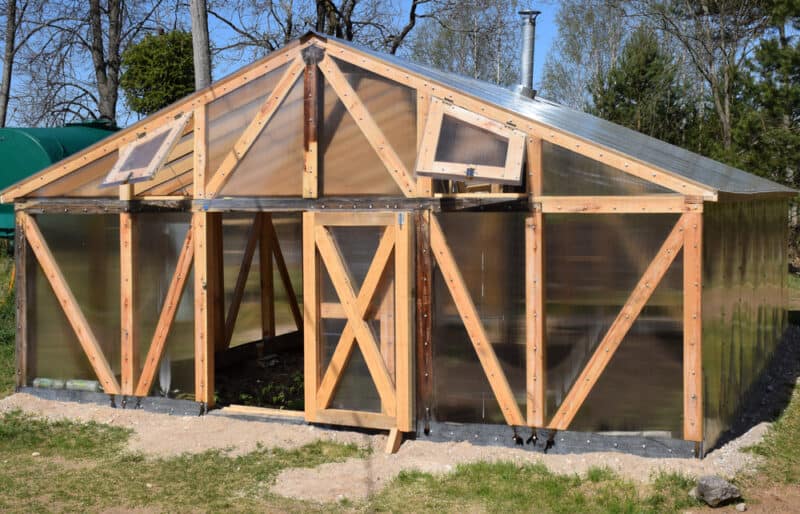
One of the hidden blessings of being pregnant in 2020 was being pregnant during the height of the COVID-19 pandemic.
That probably came off wrong! What I mean by that is that I was lucky enough to be working from home and not commuting to a job (in addition to working on the farm) for 7 months of my pregnancy.
Because of that, we were able to take on a few new tasks on our farm such as building a new pasture fence and planting a large greenhouse. Had I not been working from home (hello, mid-afternoon nap), this would not have been possible.
My advice to pregnant homesteaders is to avoid taking on as many new projects as possible during this time. The added stress and labor likely won’t be worth it.
If you’re just starting out on your farm, it might not be the time to try to get pregnant – and vice versa. Get past the initial building of your infrastructure, because those 13+ hour days will be incredibly taxing.
6. Wear Gloves and other Protective Gear
Wear gloves whenever possible when you’re pregnant and homesteading. I wear gloves whenever I’m working with the animals as well as most of the time in my garden (when I remember).
The biggest risk to pregnant homesteaders is toxoplasmosis, a soil-borne pathogen that’s actually carried by cats and deposited in their feces.
Your doctor will likely advise you to wear gloves in the garden because cats often use garden soil as their personal litter box. We have a fence around our garden so fortunately, this isn’t a concern (although toxoplasmosis can linger, so I’m always extra cautious). Wearing gloves doesn’t hurt, so be sure to have a few pairs on hand.
You may want to wear protective gear for other activities, too, depending on what sorts of things you do on your homestead.
We use very few chemicals on our property, but when they are absolutely necessary, I leave the handling of them to my husband for now.
7. Snack Often – and Stay Hydrated

I’ve had an interesting pregnancy in that I am rarely hungry – but always thirsty. However, just because I don’t feel hungry doesn’t mean I don’t need to snack often.
If I don’t snack every couple of hours, I get cranky and tired. Have plenty of healthy snacks and a bottle of water on hand at all times – you’ll thank yourself later.
8. Modify Tasks When Possible
The phrase “work smarter, not harder” is never truer than when you are pregnant. Before pregnancy, I always figured the pathway to success was to work, work, work – and then work some more. I could push through the exhaustion and wake up the next day, drink 3 cups of coffee, and be ready to go.
In pregnancy, that’s just not possible (and not only because coffee is off the table). You might think you can tackle the 7000 things on your to-do list, and in all fairness, you might. The next day, your body is going to feel the after-effects. It’s going to make it very difficult to shoulder through for another day of hard labor.
Therefore, it’s essential that you learn how to modify tasks whenever possible. Can you use a wheelbarrow instead of lifting all of those heavy grain bags? Are you able to work first thing in the morning, when you aren’t as tired and can stay out of the heat of the day? Can you save the heavier tasks for someone else?
Modify your tasks – you don’t necessarily have to do less, but be smarter about what you do choose to do.
9. Be Careful Working with Animals
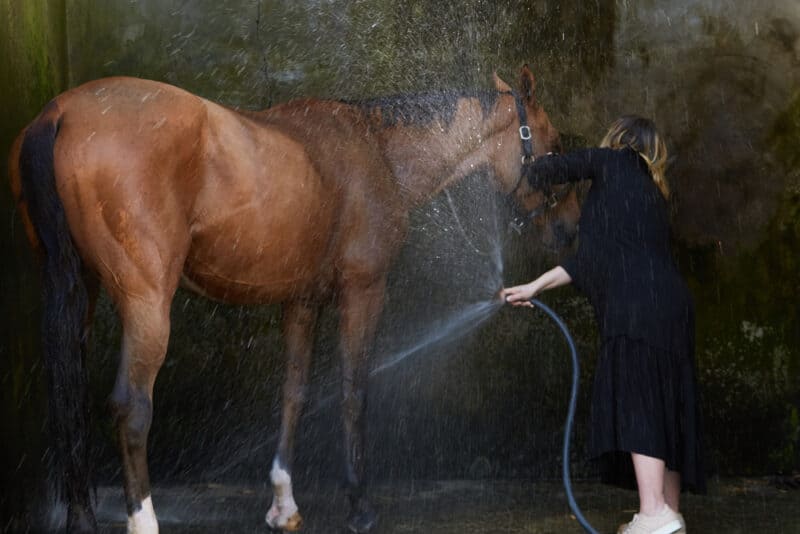
My poor doctor. I don’t think she ever heard as many oddball questions as she did when I came into her office during my prenatal checkups! There’s a good chance your doctor is not going to understand most farm-related questions you ask.
Bring in a list of livestock medications and it’s going to be like you’re speaking another language. Ask about communicable diseases that can be transferred from animals to you and she is going to have to do a quick Google search to catch herself up.
It’s important that you be a good advocate for yourself, particularly in regards to working with animals. Most medical practitioners simply aren’t familiar with these issues. Ask as many questions as you can. However, it’s also important that you educate yourself (but also be wary about relying too much on Dr. Google).
I found myself down a Google rabbit hole one evening, researching toxoplasmosis as it relates to pregnancy and lambing. I was absolutely petrified that I would contract this disease and it would harm my unborn son. On the flip side, I was also unsure of how we would manage lambing if everything was left to my husband.
The reality is that there are some diseases that can be spread from an animal (especially during birthing) to a pregnant woman.
However, wearing gloves, avoiding coming into contact with bodily fluids (not always possible, but do your best) and being cautious whenever possible is all you can do. Don’t drive yourself crazy thinking about all the what-ifs.
Educate yourself so you are aware of the risks. Toxoplasmosis, listeriosis, and chlamydia are the biggest risks to pregnant homesteaders, particularly if you work with sheep, goats, or cows. Just make sure you wash your hands and clothing with soap and warm water after handling animals and wear gloves if possible.
If you can, do not milk your ewes and avoid contact with miscarried lambs (these are more likely to carry the pathogen). If you suddenly start running a high temperature, make sure you get in touch with your doctor, too.
What About After the Baby is Born?
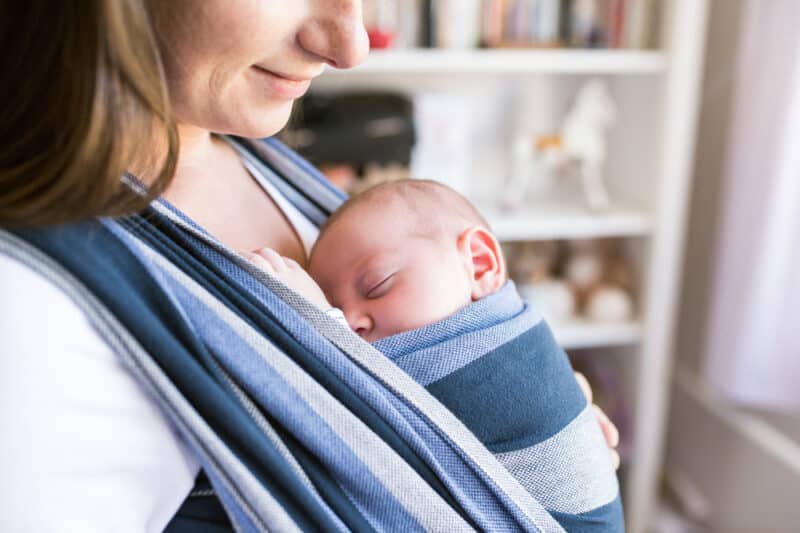
My baby hasn’t been born yet.
Despite this, you can bet that I’ve been spending a lot of time researching how to farm with a newborn in the last few weeks!
A lot of people refer to the few months after the baby is born as the “4th trimester.”
This is another learning period for both you and your new baby, and you’ll be suffering from some new physical symptoms that can make homesteading a little challenging, still.
All of the tips from earlier in this article still apply – but here are two more to help get you through.
1. Babywearing
I put two different kinds of babywearing devices (slings, carriers, etc) on my baby registry because I’ve known since before I got pregnant that this was going to be the key to getting things done.
There is a learning curve when wearing your baby and there are some tasks you are still going to want to avoid – like running the oven or a canner.
However, babywearing can really help you get some stuff done around the house and homestead. Take some time to master the art!
2. Take it Easy
Having a baby is challenging, but again, as with your pregnancy, it’s important that you take it easy on yourself. Women have been homesteading while pregnant (and with newborns in tow) for centuries – you’ve got this!
Ultimately, just remember that this is a temporary stage in your life, and before you know it you will be back to doing all the things you used to do, and then some!
Let’s not forget the perks, either. The single best thing about homesteading while pregnant? The excitement you feel when looking forward to doing your farm chores with your future child working right alongside you.
